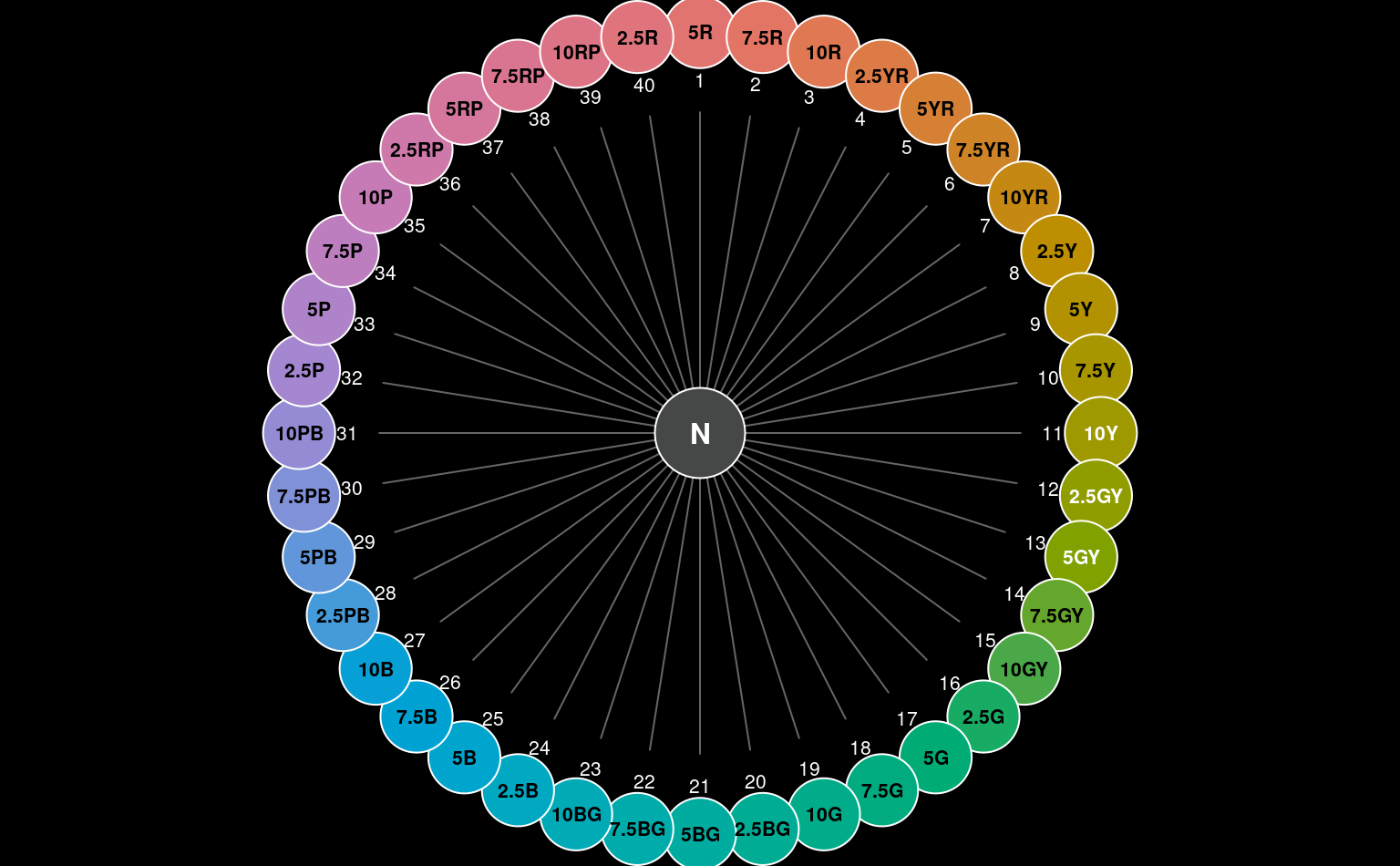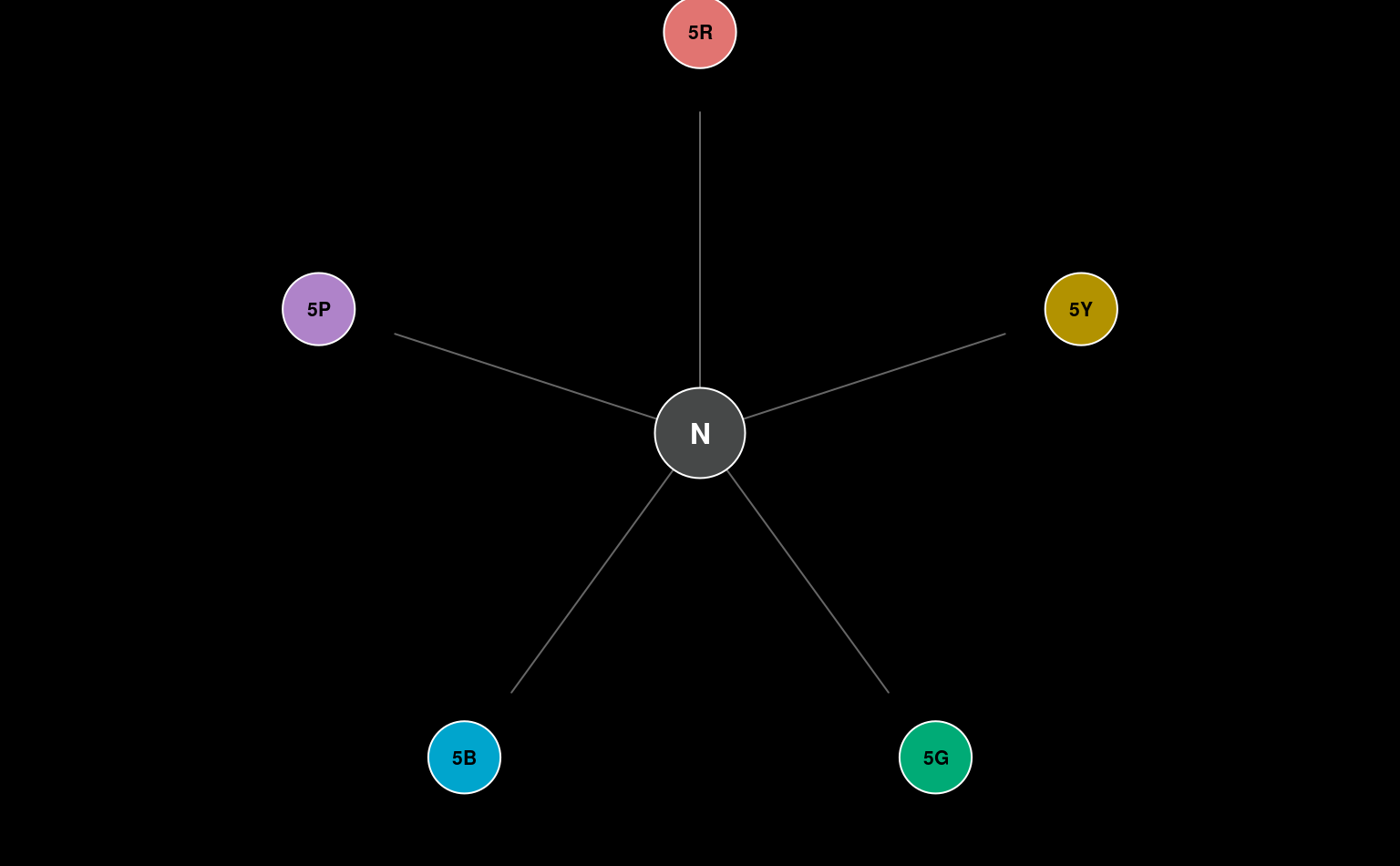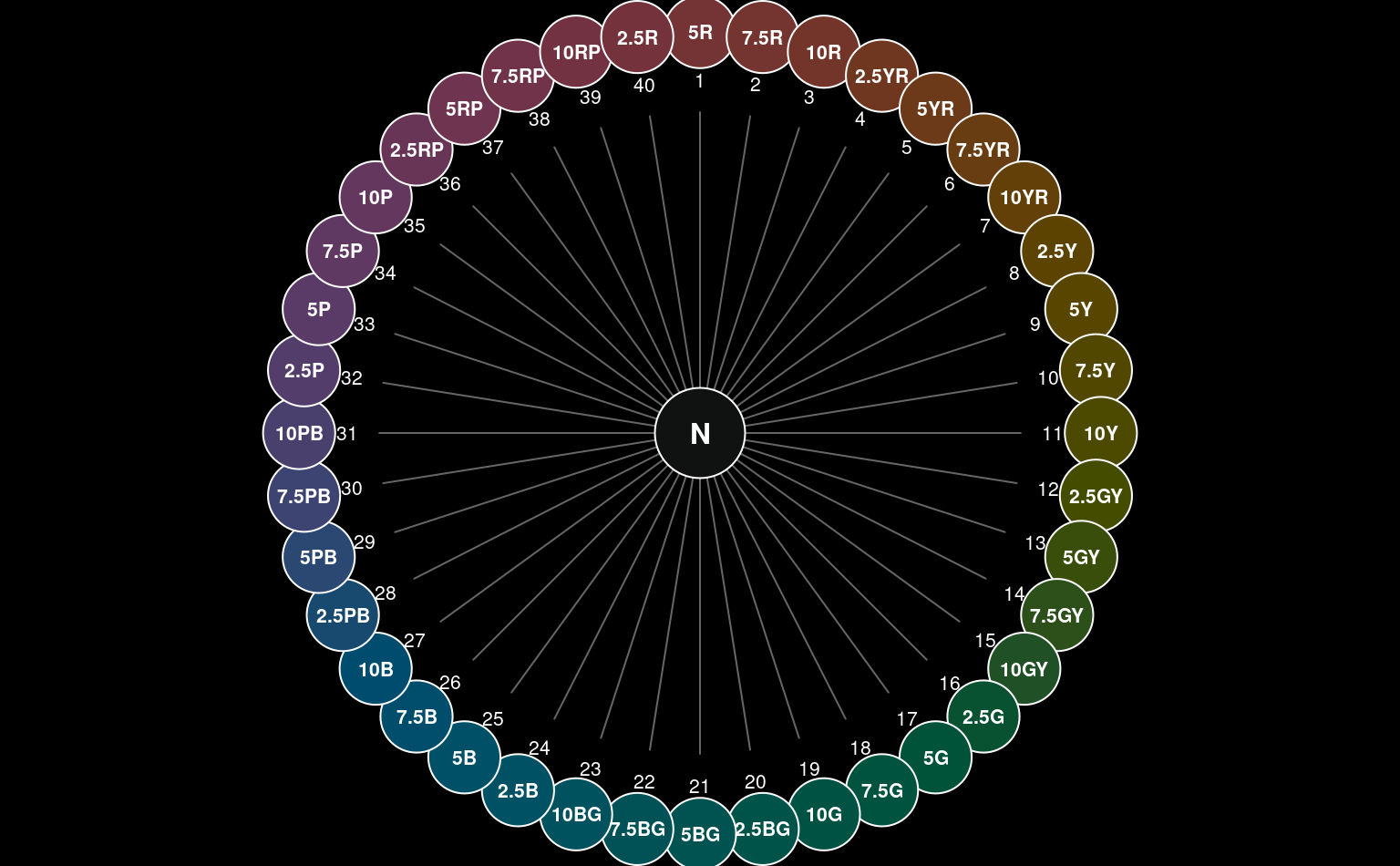Munsell hues are arranged on the unit circle with "neutral" at the center.
Usage
huePositionCircle(
hues = huePosition(returnHues = TRUE),
value = 6,
chroma = 10,
chip.cex = 5.5,
label.cex = 0.66,
seg.adj = 0.8,
seg.col = grey(0.4),
plot = TRUE,
simulateCVD = NULL,
CVDseverity = 1
)Arguments
- hues
vector of Munsell hues, commonly derived from
huePosition()- value
single integer, Munsell value used to create an actual color
- chroma
single integer, Munsell chroma used to create an actual color
- chip.cex
numeric, scaling for color chips
- label.cex
numeric, scaling labels
- seg.adj
numeric, scaling for line segment cues
- seg.col
single color, color used for line segment cues
- plot
logical, generate output on the current graphics device
- simulateCVD
simulate color vision deficiencies with the colorspace package, should be the character representation of a function name, one of: 'deutan', 'protan', or 'tritan'.
- CVDseverity
numeric value between 0 (none) and 1 (total), describing the severity of the color vision deficiency
Note
The best results are obtained when setting margins to zero, and inverting foreground / background colors. For example: par(mar = c(0, 0, 0, 0), fg = 'white', bg = 'black').
Examples
# keep examples from using more than 2 cores
data.table::setDTthreads(Sys.getenv("OMP_THREAD_LIMIT", unset = 2))
# better graphics defaults
op <- par(
mar = c(0, 0, 0, 0),
fg = 'white',
bg = 'black',
xpd = NA
)
# full set of hues, as generated by huePosition(returnHues = TRUE)
huePositionCircle()
 # just a few hues
huePositionCircle(hues = c('5R', '5Y', '5G', '5B', '5P'))
# just a few hues
huePositionCircle(hues = c('5R', '5Y', '5G', '5B', '5P'))
 # adjust Munsell value and chroma
huePositionCircle(value = 3, chroma = 6)
# adjust Munsell value and chroma
huePositionCircle(value = 3, chroma = 6)
 # reset graphics state
par(op)
# reset graphics state
par(op)